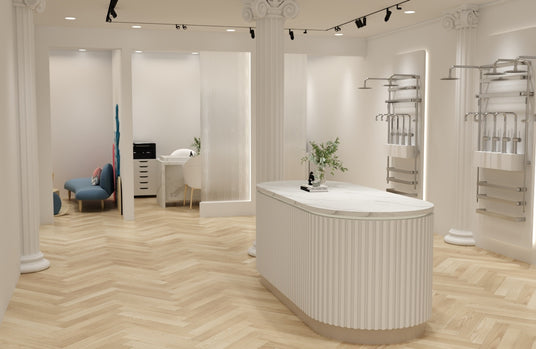Identifying Your Accessibility Toilet Needs with Rimless Disabled Toilets
Are you searching for a bathroom solution that combines accessibility with superior hygiene? Rimless disabled toilets are specifically designed to address the unique requirements of users with mobility challenges while offering advanced cleaning benefits. These specialized fixtures eliminate the traditional rim where bacteria can accumulate, making them significantly easier to maintain than conventional models. Whether you're upgrading a home bathroom for aging in place, equipping a healthcare facility, or ensuring public restrooms meet accessibility standards, rimless disabled toilets provide the perfect balance of functionality and hygiene.
The innovative design of rimless toilets creates a smoother interior surface that prevents waste buildup and reduces cleaning time. For caregivers and users alike, this represents a meaningful improvement in daily maintenance. Many Australian customers specifically seek out these models for their combination of accessibility features and improved sanitation.
When considering your bathroom needs, think about who will be using the facilities and what specific mobility challenges need to be addressed. Rimless toilet pans typically feature a higher seating position and specialized dimensions that conform to Australian accessibility standards. The elimination of the traditional rim not only improves hygiene but can also provide a more comfortable experience for users with mobility devices.
Rimless disabled toilets also typically include specialized flush mechanisms optimized for thorough bowl cleaning with minimal water usage. This makes them an excellent choice for those concerned about both accessibility and environmental impact. The rimless toilet Australia market offers various configurations to match specific accessibility requirements, including options with specialized height, projection, and support features.
Before making your selection, consider factors such as the available bathroom space, the specific needs of the primary users, and compliance with relevant Australian accessibility standards. The right rimless disabled toilet will provide years of reliable service while creating a more dignified and independent bathroom experience.
Materials and Quality Considerations for Rimless Disabled Toilets
When investing in a rimless disabled toilet, understanding the materials and quality factors is essential for making an informed decision. Rimless disabled toilets available in Australia are typically crafted from high-grade vitreous china or porcelain, materials chosen for their durability, non-porous surfaces, and resistance to staining. These premium materials ensure that your accessible bathroom fixture remains hygienic and visually appealing for years to come.
The quality of a rimless toilet extends beyond just the ceramic components. Premium models feature heavy-duty internal mechanisms designed to withstand frequent use while maintaining consistent performance. Brands like Seima, RAK Ceramics, and Fienza offer rimless toilet Australia products with exceptional build quality that meets or exceeds Australian standards for accessibility fixtures.
The glazing process is particularly important for rimless toilet pans, as the absence of the traditional rim creates a different water flow pattern during flushing. High-quality glazing ensures that the entire bowl surface remains clean after each use, maximizing the hygiene benefits of the rimless design. Leading manufacturers apply multiple layers of glaze and fire the ceramic at extremely high temperatures to create an exceptionally smooth, non-porous surface that resists bacteria growth and simplifies cleaning.
Another critical quality factor in rimless disabled toilets is the flushing system itself. Premium models incorporate advanced water distribution technology that ensures complete bowl coverage despite the absence of a rim. This typically involves precisely engineered water channels that direct the flush with sufficient force to clean the entire bowl surface effectively.
The mounting hardware and connection components of rimless toilet pans should also be scrutinized for quality. Stainless steel bolts, heavy-duty plastic components, and precision-engineered connectors contribute to the overall durability and stability of the fixture—particularly important for users who may need to transfer from mobility devices.
When evaluating options, look for certifications like the Watermark approval, which indicates compliance with Australian plumbing standards. Additionally, warranties ranging from 7-15 years for ceramic components suggest manufacturer confidence in their rimless disabled toilets and provide valuable long-term protection for your investment.
Functional Features of Rimless Disabled Toilets for Enhanced Accessibility
Understanding the specialized functionality of rimless disabled toilets helps ensure you select the appropriate model for specific accessibility needs. The primary innovation of these fixtures is the elimination of the traditional rim, creating a seamless bowl interior that dramatically improves hygiene and simplifies cleaning. Rimless disabled toilets feature carefully engineered water channels that direct the flush across the entire bowl surface without the need for a rim, achieving superior cleaning results with each flush.
The accessibility features of rimless toilet models extend well beyond the rimless design itself. Most rimless disabled toilets available in Australia incorporate raised seating heights (typically 460-480mm from floor to seat) that facilitate easier transfers from wheelchairs and walkers. This complies with AS 1428.1 standards for accessible design and provides greater comfort and independence for users with mobility challenges.
Many premium rimless toilet pans also feature extended projections from the wall, creating additional space for wheelchair maneuvering and caregiver assistance when needed. Specialized models may include integrated grab rails or be designed for compatibility with separately mounted support bars that provide stability during transfers. The rimless toilet Australia market offers various configurations to meet specific accessibility requirements in both residential and commercial settings.
The flushing mechanisms of rimless disabled toilets are typically designed for easy operation, often featuring large, easy-to-reach buttons or levers that require minimal hand strength to activate. Some advanced models offer dual-flush technology with tactile or color-coded buttons that are intuitively distinguishable for users with visual impairments. Brands like Kohler and Geberit offer rimless toilets with innovative flush technologies that optimize water usage while ensuring complete bowl cleaning.
Installation configurations vary among rimless disabled toilets, with wall-hung models providing advantages for wheelchair accessibility by eliminating the floor-mounted base and creating additional foot space. These wall-mounted systems typically include concealed cisterns with easy-access panels for maintenance, combining practical functionality with streamlined aesthetics.
For users with specific needs, some rimless toilet pan designs incorporate specialized features such as antimicrobial surfaces, odor control systems, or compatibility with electronic bidet seats that provide additional hygiene functionality for users with limited mobility.
Design and Style Options for Rimless Disabled Toilets in Australian Bathrooms
Selecting the right rimless disabled toilet involves balancing functional accessibility requirements with aesthetic considerations that complement your overall bathroom design. Modern rimless disabled toilets have evolved significantly beyond purely utilitarian designs, now offering sleek profiles and contemporary styling that integrates seamlessly with various bathroom décors. The elimination of the traditional rim not only improves hygiene but also contributes to a cleaner, more streamlined appearance that works particularly well in modern bathroom settings.
Australian bathroom design trends increasingly emphasize accessibility without sacrificing style, and rimless toilets perfectly embody this approach. Leading brands like Fienza and RAK Ceramics offer rimless toilet Australia products in various shapes and profiles, from softly rounded contours to more angular, geometric designs that complement contemporary bathroom aesthetics. The clean lines of rimless toilet pans create a sophisticated look while providing the practical benefits of enhanced accessibility and easier cleaning.
Color options for rimless disabled toilets have expanded beyond the traditional white, with some manufacturers offering matte black, gray, or even custom color options to coordinate with specific design schemes. These color variations allow for greater personalization while maintaining the essential accessibility features. When selecting finishes, consider how the toilet will integrate with other bathroom elements such as grab bars, which are available in coordinating finishes from chrome to matte black.
Wall-hung rimless disabled toilets offer particularly versatile design possibilities, creating a floating effect that maximizes floor space and creates a more open, spacious appearance. These models conceal the cistern within the wall, presenting only the bowl and flush plate in the bathroom space. This configuration not only enhances the visual appeal but also simplifies floor cleaning—an important consideration for accessible bathroom spaces.
Flush plates and actuator buttons for rimless toilets have also become design features in their own right, with options ranging from minimalist rectangular plates to circular designs in various metallic and matte finishes. These elements can serve as subtle design accents while providing the intuitive operation essential for accessible fixtures.
When planning an accessible bathroom renovation, consider how your rimless disabled toilet will coordinate with other accessibility features such as shower seats, grab bars, and vanities. Many manufacturers now offer coordinated accessible bathroom collections that maintain consistent design language across all elements, creating a cohesive and thoughtfully designed space that addresses accessibility needs without compromising aesthetic quality.
Purchasing Guide for Rimless Disabled Toilets in Australia
Finding the right rimless disabled toilet for your bathroom involves navigating various brands, features, and pricing considerations. Premium Australian retailers offer a curated selection of rimless disabled toilets from trusted manufacturers that meet Australian accessibility standards while providing superior performance and durability. Leading brands in the rimless toilet Australia market include Seima, RAK Ceramics, Geberit, Kohler, and Fienza, each offering distinct advantages in their accessible bathroom collections.
When comparing options, understand that rimless toilets represent an investment in both accessibility and hygiene. Quality models typically range from $600-$1500 depending on features, brand reputation, and included accessories. While this may exceed the cost of conventional toilets, the enhanced cleaning benefits and accessibility features provide significant long-term value, particularly for users with mobility challenges.
Most reputable retailers offer comprehensive warranty protection for rimless toilet pans, typically providing 7-15 years of coverage for ceramic components and 1-5 years for mechanical parts and fittings. This warranty protection reflects manufacturer confidence in their rimless toilet products and provides valuable peace of mind for your investment.
Many Australian bathroom specialists offer professional consultation services to help you identify the most appropriate rimless disabled toilet for your specific accessibility needs and bathroom configuration. These experts can provide guidance on compliance with relevant Australian standards including AS 1428.1 for accessible design, ensuring your selection meets all necessary requirements for residential or commercial applications.
Installation considerations are particularly important for rimless disabled toilets, as proper setup ensures optimal functionality and accessibility. Professional installation is highly recommended to ensure compliance with plumbing codes and accessibility standards. Many retailers offer installation services or can recommend qualified professionals familiar with accessible bathroom fixtures.
When making your selection, consider the availability of replacement parts and ongoing support for your chosen brand. Established manufacturers maintain reliable supply chains for components, ensuring that your rimless toilet pan can be serviced efficiently if needed. This long-term support represents an important factor in the overall value equation when investing in accessible bathroom fixtures.
Australian customers appreciate that many retailers offer showroom displays where you can examine rimless disabled toilets in person before purchasing. This hands-on experience provides valuable insights into design, build quality, and functionality that complement online research and specifications.
Eco-Friendly Benefits of Rimless Disabled Toilets for Sustainable Bathrooms
Modern rimless disabled toilets combine accessibility with impressive environmental credentials, making them an excellent choice for eco-conscious Australian consumers. The innovative design of rimless disabled toilets optimizes water distribution during flushing, typically achieving complete bowl cleaning with significantly less water than traditional models. This water efficiency is particularly important in Australia's variable climate conditions, where conservation remains a priority in bathroom design.
Most quality rimless toilets available in Australia feature WELS (Water Efficiency Labelling and Standards) ratings of 4 stars or higher, indicating excellent water conservation performance. These efficient fixtures typically use just 3-4.5 liters per full flush and 2.5-3 liters for half flushes, compared to older toilets that might use 9-12 liters per flush. Over the lifetime of the fixture, a rimless toilet pan can save hundreds of thousands of liters of water compared to less efficient models.
The manufacturing processes for premium rimless toilet Australia products have also evolved to reduce environmental impact. Leading brands like RAK Ceramics and Fienza implement sustainable production techniques including water recycling in their manufacturing facilities, energy-efficient kilns, and responsible sourcing of raw materials. Some manufacturers have even incorporated recycled materials into components such as flush mechanisms and mounting hardware.
The superior hygiene of rimless disabled toilets also contributes to their environmental benefits by reducing the need for harsh chemical cleaners. The seamless bowl interior eliminates hiding places for bacteria and scale, allowing effective cleaning with milder, eco-friendly products. This not only reduces chemical usage but also minimizes the environmental impact of cleaning processes over the fixture's lifetime.
The durability of quality rimless toilets represents another important sustainability factor. With expected service lives exceeding 15-20 years when properly maintained, these fixtures reduce resource consumption and waste associated with more frequent replacements. Manufacturers like Geberit and Kohler design their rimless disabled toilets for longevity, with high-grade materials and replaceable components that extend useful life.
When considering accessibility renovations, the environmental credentials of rimless toilet pans provide additional value beyond their primary accessibility benefits. Many Australian homeowners and facility managers now prioritize fixtures that combine functional accessibility with reduced environmental impact, recognizing that these dual benefits represent the future of responsible bathroom design.
For project planners seeking Green Star ratings or other sustainability certifications, the water efficiency and environmentally responsible manufacturing of premium rimless disabled toilets can contribute valuable points toward overall project sustainability goals.
 View Detail
View Detail
































